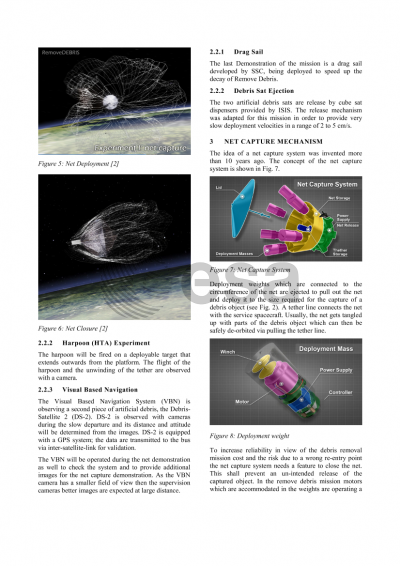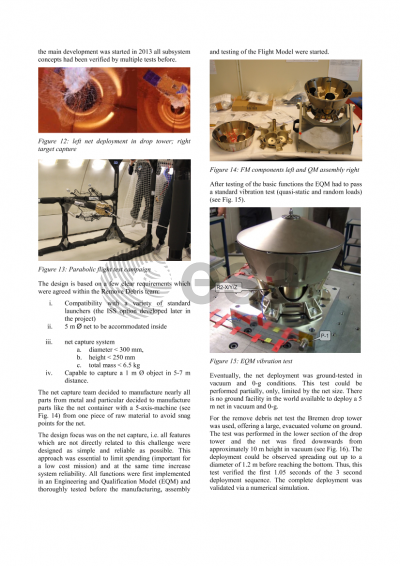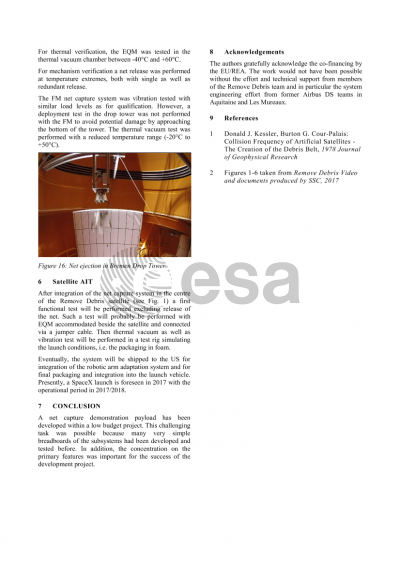Document details

Abstract
Many studies of the last decade have shown that debris removal missions are mandatory in order to secure future access to Low Earth Orbits. At the same time several different technology concepts, like capture technologies, relative navigation technologies or drag augmentation devices have been developed, which are key elements for future debris removal missions. Nevertheless those technologies were never proved in space as yet, which would be as important to secure the technology maturity for future missions.
In 2017 the Remove Debris mission co-financed by the European Union will verify various key technologies for debris removal. The net capture mechanism is one of the demonstration payloads and was developed by Airbus DS in Bremen. The net system is one of the most promising debris capture concepts featuring a high degree of flexibility for a broad variety of object shapes, sizes and tumbling rates.
The present demonstrator system is designed to capture objects up to 2m average diameter. During the on orbit capture experiment an artificial debris satellite of roughly 1 m diameter will be captured.
Future up-scaled net capture systems would be capable to capture objects up to 12 m in size. The net capture system is relying on deployment masses which are accelerated during net deployment in order to move a net out of a container and to inflate the net on the way to its target object. After capture the net is wrapped around the target and established a tether line connection to the service spacecraft.
The downscaled demo capture system features all aspects of an on-orbit capture process including deployment of a hemispherical 5m net, tether line deployment, active net closure and target locking.
The paper will address the primary design aspects, the key parameters and material selections for the system. Further the paper describes the qualification test approach during phase D of the demo capture system development.
The qualification phase of the net payload was finished in June 2016. The actual demonstration mission is planned to be launched in the mid of 2017.
Preview







